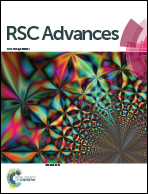Effect of sodium chloride on the electrochemistry activity of electrodeposited CdTe films with various morphologies
Abstract
In this paper, a cadmium telluride (CdTe) film is successfully synthesized on Ni foils via a simple electrochemical deposition method. Especially, with sodium chloride (NaCl) being added into the electrolyte directly, an interesting morphology evolution from spherical CdTe film to rod-shaped CdTe film, then to clustered CdTe film, and finally to double-layered film is observed with the increase of the NaCl concentration. The products are characterized by X-ray diffraction (XRD), field-emission scanning electron microscopy (FESEM), transmission electron microscopy (TEM), UV-vis spectroscopy, and photoelectrochemical measurements. It is found that the amount of NaCl played an important role in determining the morphology of CdTe film. The possible growth mechanism is discussed as well. Photoelectrochemical measurements reveal that the morphology of CdTe film can affect their photoelectrical properties greatly, and the uniform CdTe nanorod arrays prepared at 0.05 mol L−1 NaCl exhibit excellent photoelectrical properties, which is meaningful to the investigation of CdTe solar cells. According to the experiments, this simple but effective method can also be extended to the control of the growth of other nanostructures.


 Please wait while we load your content...
Please wait while we load your content...